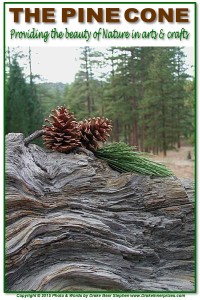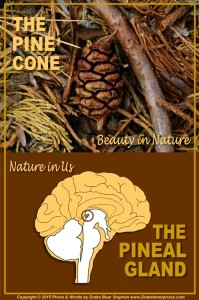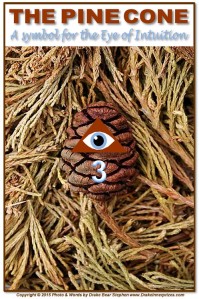Tags
NLP stands for Neuro-linguistic programming. Neuro is the brain and neural network that our bodies send, store, and receive signals. Linguistics is the verbal and non-verbal content that moves through the neurological system. Programming is the way in which we use the content running through the neurological system. The brain directs, sequences, and changes signals based on prior stored experiences and our beliefs. In short, NLP is the study of the mechanics of the mind.
NLP is also a “study of excellence” based on the language, behavior, strategies, beliefs, and patterns of successful people. The logic is that if an individual can duplicate the model of a successful person, then they, too, will be successful.
The basic premise of NLP is that once we understand our own perception of reality, called a “map”, we can change our perceptions in order to achieve what we are wishing for. Our perceptions are self-fulfilling prophecy.
NLP was developed in the early 1970s by Richard Bandler, a mathematician, and John Grinder, a linguist, at the University of California at Santa Cruz. NLP incorporates ideas and models from various roots. The three major ones are:
- Milton Erickson – Hypnotherapy
- Friz Perls – Gestalt Therapy
- Virginia Satir – Family Therapy
In addition, other ideas originated from the work of:
- Noam Chomsky – Transformational Grammar
- Gregory Bateson – Logical levels
- Moshe Feldenkrais – Body Work
- Eugene Galanter, George Miller, and Karl Pribram – Systems Theory
- Alfred Korzybski – General Semantics
- Ivan Pavlov – Stimulus-trigger-response Conditioning
WHAT TECHNIQUES ARE USED IN NLP?
Not only is NLP the study of linguistics and models but it also has a language of its own that must be learnt by a new practitioner.
The practice of NLP consists of specific techniques called technologies. Included in the list of techniques are: Anchoring; Congruence; Ecology; Eye Cues; Mapping; Modeling; Neuro-logical Levels; Pacing & Leading; Perceptual Positions; Rapport; Reframing; Representational Systems; Sensory Acuity & Calibration; States & Emotions; Strategies & Goals; Submodalities; Values & Beliefs; and Well-formed Outcomes.
BODY LANGUAGE
Body language is read through various ways such as an individual’s use of representational systems, submodalities, and eye cues.
REPRESENTATIONAL SYSTEMS
Our representational systems are how we use our senses to perceive. In addition, how we store and remember information is connected to the senses. Some believe individuals have preferred representational system (PRS) and process information primarily in one sensory modality. Others believe that we use all of the representational systems to one degree or another. And yet others believe that when an individual is under stress, one representational system will more dominate than the others. The representational systems are:
- Visual (images)
- Auditory (sounds)
- Kinesthetic (touch and internal feelings)
- Gustatory (tastes)
- Olfactory (smells)
- Digital (thought including internal dialog)
An individual’s use of representational systems can be observed by tracking their breathing, eye movements, gestures, posture changes, skin color, tone of voice, and use of sensory predicates.
SUBMODALITIES
The qualitative and quantitative details of representational systems are called submodalities. Submodalities include characteristics such as aspect, brightness, color, clarity, contrast, density, direction, distance, intensity, fragrance, frequency, location, movement, orientation, perspective, pitch, pressure, rhythm, shape, size, symmetry, taste, temperature, texture, tone, transparency, volume, and weight.
Analyzing and clarifying the submodalities helps us to consciously understand how something is linked to the senses, what emotion it may illicit, and how it is held in the mind. NLP techniques that change submodalities can alter responses to specific stimuli.
EYE CUES
Eye flickers in specific directions can often indicate internal mental processing. The common NLP model for eye accessing cues is:
- Upwards to the left – Visually remembered (Vr)
- Upwards to the right – Visually constructed (Vc)
- Level toward the left ear – Auditorily remembered (A)
- Level toward the right ear – Auditorily constructed (A)
- Down to the right — Kinesthetic (K)
- Down to the left – Internal Dialogue
Note: This is one of several different models of Eye Cues. In addition, all individuals are unique and many individuals may not fit this model. The best way to test, is to observe the client and calibrate their personal system.
VERBAL LANGUAGE
There are two models that focus directly on verbal language: the Meta and the Milton.
META MODEL
It is common for individual’s to distort, generalize, or delete important information in everyday communication. The Meta Model helps the NLP practitioner gather information from the client by asking questions designed to clarify an individual’s meaning in what they are communicating. In other words, it drills down to the finite essence of meaning. The Meta Model helps uncover the missing information by asking questions in the following forms: according to whom, compared to what or whom, how, how do you know, how does X cause Y, what, what would happen if, where, when, which, and who. Note that “why” is not one of the questions that is asked as it usually puts an individual on the defensive.
MILTON MODEL
The Milton Model is the opposite of the Meta Model. It is purposely vague and metaphoric language. This form of language allows the client to fill in their own meaning for what is being heard. The Milton Model is derived from Milton Erickson, a skilled hypnotherapist, who used vague and ambiguous language to induce trance. It works by distracting the conscious mind while the subconscious can be accessed. The Milton Model uses ambiguity, double binds, embedded suggestion, metaphor, multiple-meaning sentences, and pacing and leading.
CHANGE ACTIVITIES
There are hundreds of different NLP techniques that have are presented in books. In this section I will cover a few of the major ones.
WORKING ON DIFFERENT NEURO-LOGICAL LEVELS
Working a technique through six neuro-logical levels facilitates belief change. The six levels are:
1. Environment – The context and how it affects behavior.
2. Behavior – Actions, habits, and patterns of behavior.
3. Capability – Skills and knowledge resources for behavior.
4. Beliefs & Values – Higher resources that motivate and drive behavior.
5. Identity – Sense of self.
6. Spirit or Strategic Vision – Higher purpose and values that create identity.
MAPPING ACROSS
Mapping across is the process of transferring elements of one state or situation to another. It involves employing successful strategies, beliefs, behaviors, and processes to bring about successful performance.
One example of this is called “the Circle of Excellence”. The client thinks of a situation where their current behavior is not working for them. The NLP practitioner asks the client to identify resources that would support a new behavior. The client remembers a situation where they felt the strong use of these resources or they visualize a person they know who has these resources. With this feeling present, the client steps into a circle visualized on the floor and there they experience this positive resource state. The resources are tested in a future pace scenario (see below). So the positive resources are now “mapped across” into present and future situations that will generate a new behavior.
REFRAMING
A frame can refer to a limiting belief. The basic concept of a reframe is that if we change how we perceive an event, our response and our behavior will also change. Reframing can occur in one of three ways:
1. Context Reframe – The content remains the same but the context in which it exists changes. The meaning of the behavior remains the same but can be seen to be positive in a different context.
2. Content Reframe – The context remains the same but the content within it changes. Content is usually about changing an old behavior to a new behavior.
3. Double Reframe – Both the content and the context is changed.
ANCHORING
An anchor is a process by which a particular state or response is accentuated or reinforced through the use of a unique sensory stimulus. Common anchors are gestures, voice tone, or touch. In my practice, I also use ritual to anchor change.
ECOLOGY & FUTURE PACING
Ecology is the practice of checking a client’s desired outcome against the consequences. One technique of ecology is called future pacing. After a change activity of behavior has been completed, the client is asked to visualize a related scenario happening in the future. If the client is still feeling positive then it is believed that when the client finds themselves in a similar future situation, the new behavior will occur.
PERCEPTUAL POSITIONS
There are four perceptual positions from which an NLP practitioner can observe. The ability to shift through all four positions greatly enhances an individual’s ability to establish rapport and facilitate effective communication skills.
1st Position Perceiving from within one’s self, seeing through one’s own eyes, hearing through one’s own ears, and feeling one’s own body.
2nd Position Perceiving and experiencing from another individual’s point of view. See, hear, feel, taste and smell another’s reality.
3rd Position Witnessing from an external perspective, standing back and perceiving the relationship between one’s self and another individual.
4th Position The gestalt experience of being in the other three positions simultaneously. Feeling connected, at one, with all individuals involved.
WHAT HAPPENS IN AN NLP SESSION?
The flow of a typical NLP session is:
1. The NLP practitioner checks state of the client.
2. The NLP practitioner establishes rapport with the client.
3. The NLP practitioner gathers information by analyzing the client’s verbal and body language while describing an issue. From this, the NLP practitioner can determine problems in a client’s perception and identify a root cause.
4. The NLP practitioner assists the client determine a desired outcome.
5. The NLP practitioner utilizes the resources they have in order to bring about a shift in the client’s preconceptions.
6. The NLP practitioner tests to see if the changes have taken effect with the client.
7. The NLP practitioner future paces with the client by mentally rehearsing and integrating the changes into their life.
One additional step is taken in transpersonal NLP:
8. The NLP practitioner helps the client integrate the shift in perception by calling in the client’s Higher Self to agree, support, and sustain the new perception.
WHY MAKE AN APPOINTMENT WITH ME?
NLP techniques work well with changing beliefs, depression, habit disorders, learning disorders, phobias, psychosomatic illnesses, and post-traumatic stress syndromes. NLP techniques also work well in the business world, specifically in sales and management.
In my sessions I include techniques from NLP as well as other modalities such as EFT (tapping), energy medicine, hypnotherapy, and shamanism.
QUOTES
Brains aren’t designed to get result; they go in directions. If you know how the brain works you can set your own directions. If you don’t, then someone else will. –Richard Bandler
In NLP, we don’t “treat” patients; we give people lessons on how to think and make better choices. —Richard Bandler
NLP is an attitude and a methodology, which leave behind a trail of techniques. —Richard Bandler
For me, NLP comes as close as anything I have discovered to providing the technical foundation of the art of the whole human being. –Lara Ewing
Copyright © 2015 Drake Bear Stephen. Except where acknowledged. www.DrakeInnerprizes.com





















